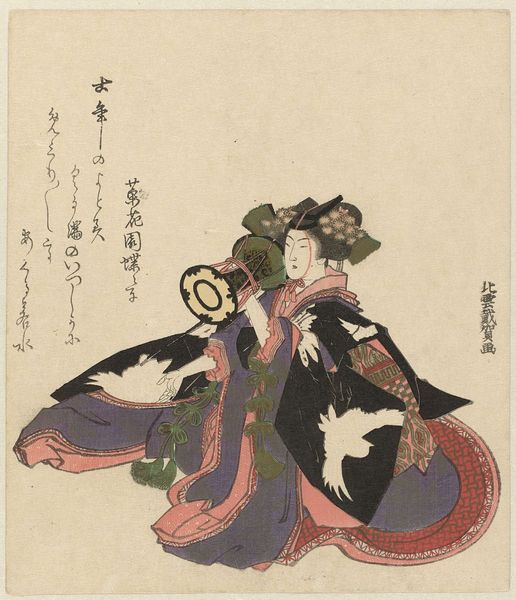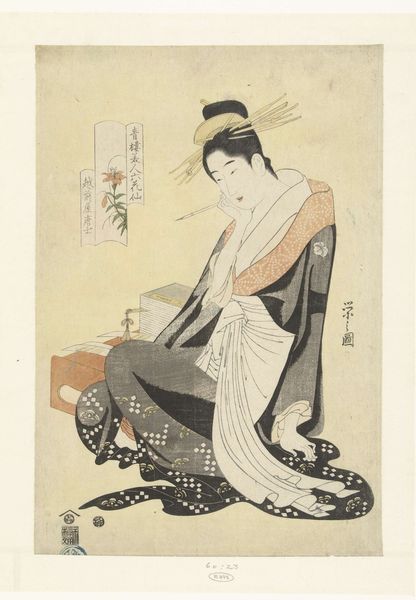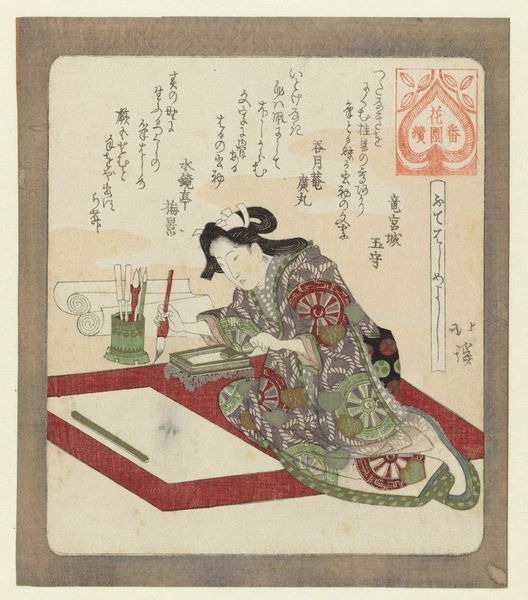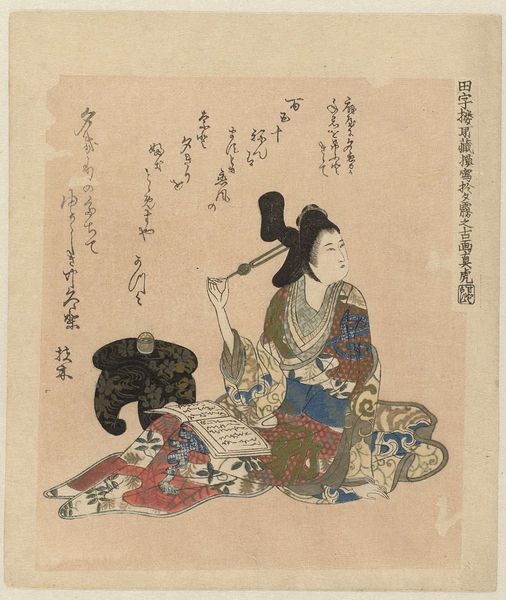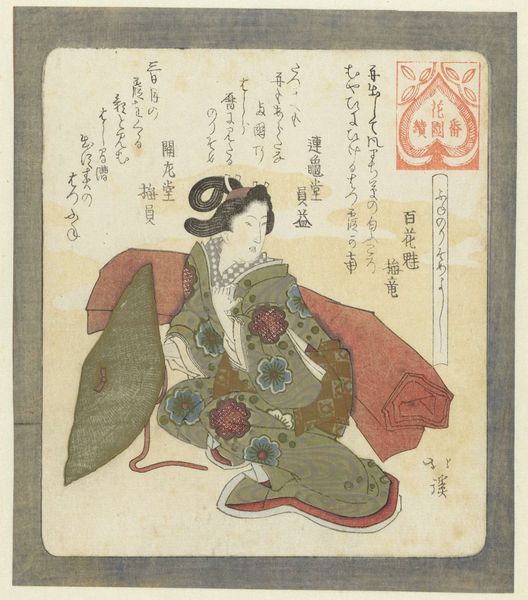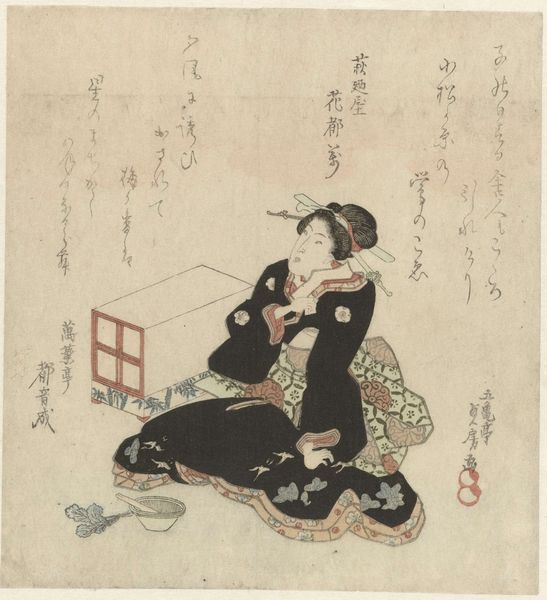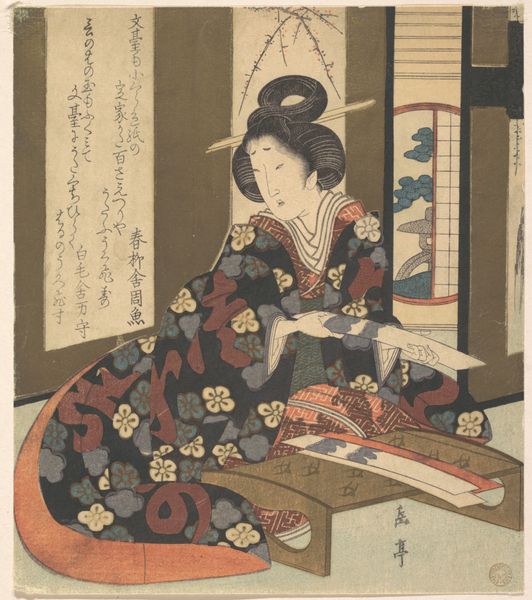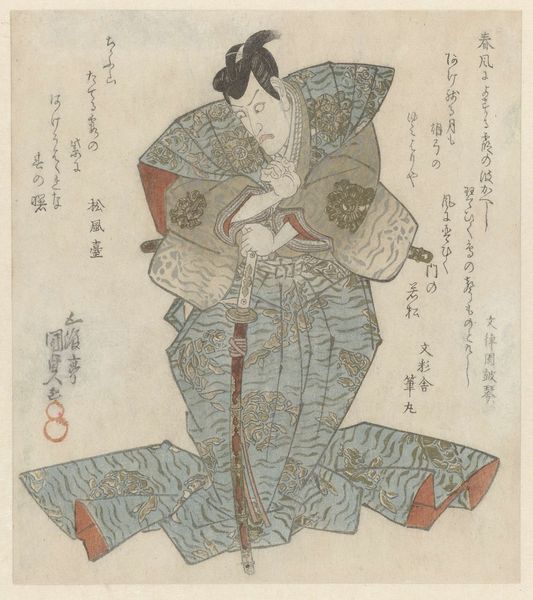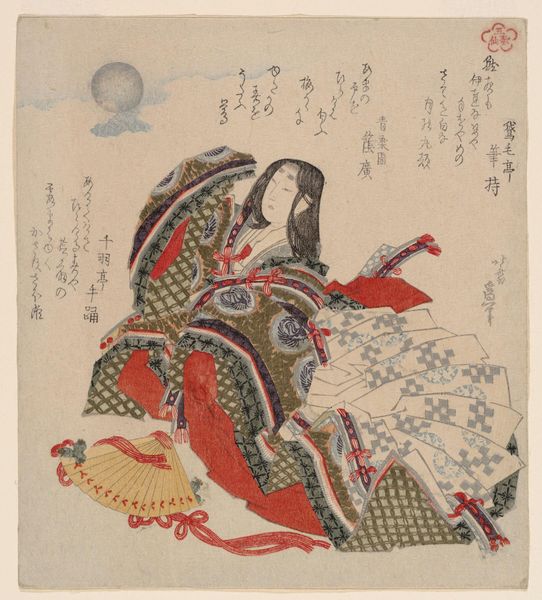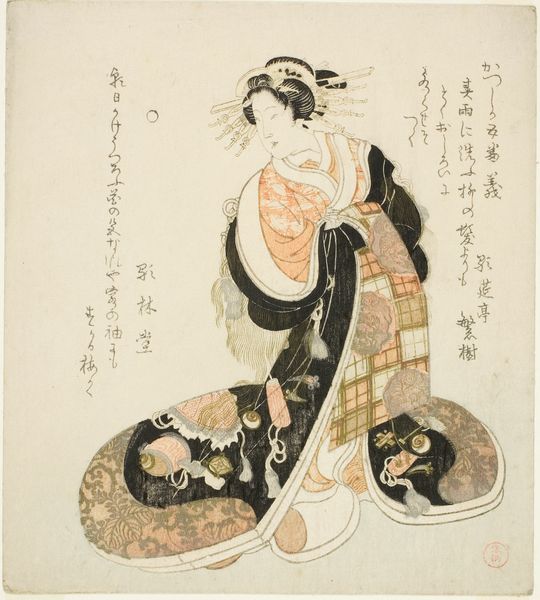
print, watercolor, woodblock-print
#
portrait
#
narrative-art
# print
#
asian-art
#
ukiyo-e
#
figuration
#
watercolor
#
woodblock-print
#
watercolour illustration
Dimensions: height 206 mm, width 173 mm
Copyright: Rijks Museum: Open Domain
Editor: Here we have "Woman Writing a Poem," a watercolor woodblock print by Suzuki Kiitsu, likely from the 1820s. I'm struck by the delicate lines and how the colors create a sense of quiet contemplation. What do you see when you look at this print? Curator: The print demonstrates a keen understanding of form and line. The composition uses a diagonal arrangement of objects and text to subtly lead the viewer's eye, establishing a clear visual pathway that organizes the scene. Observe the interplay of geometric shapes and natural forms; can you see how they create both harmony and visual interest? Editor: I do, especially the contrast between the rectangular papers and the organic curves of her kimono and hair. Is the writing part of the art itself? Curator: Absolutely. The calligraphy integrates both pictorially and semiotically with the representational components. These elements are not merely illustrative; they establish additional formal relations, complicating the structure with diverse textures and tonal ranges, thus creating depth and enriching surface appeal. Note how the varied visual planes flatten, abstract, and amplify the piece, moving us past a mimetic engagement with representation. Editor: So it's not just *what* is depicted, but *how* it’s depicted, focusing on shapes and forms and their relationship to each other? Curator: Precisely. The power of the print lies not solely in its subject but also in the meticulous organization of its constitutive visual elements, emphasizing that the aesthetic arrangement shapes and carries significance independently. Editor: This close formal reading gives me so much to consider about the artist's decisions! I had initially viewed it as a lovely representation, but now understand that its genius relies upon the artist's structural choices. Curator: Exactly! Sometimes what seems simply representative hides intricate structural intentions that greatly enhance the work.
Comments
No comments
Be the first to comment and join the conversation on the ultimate creative platform.

